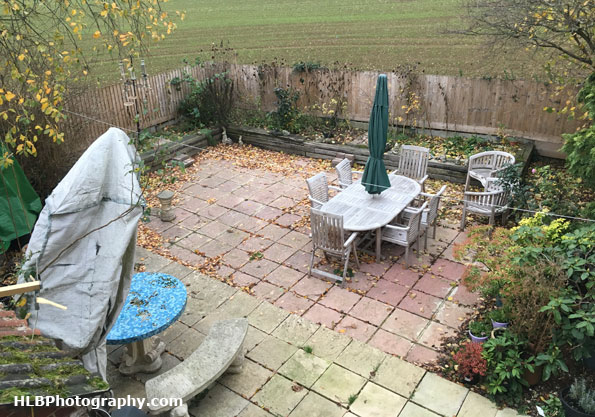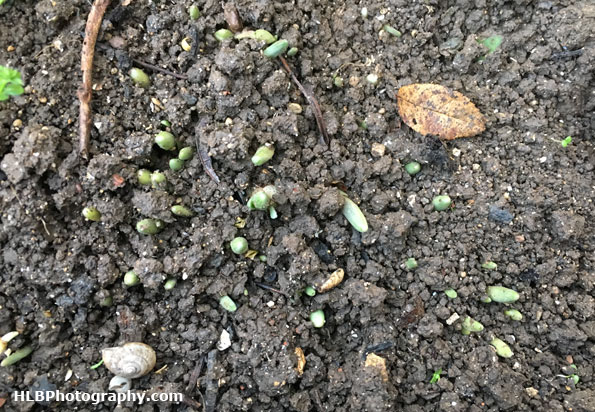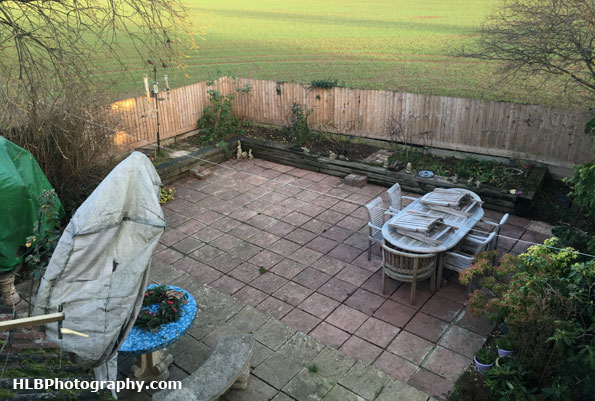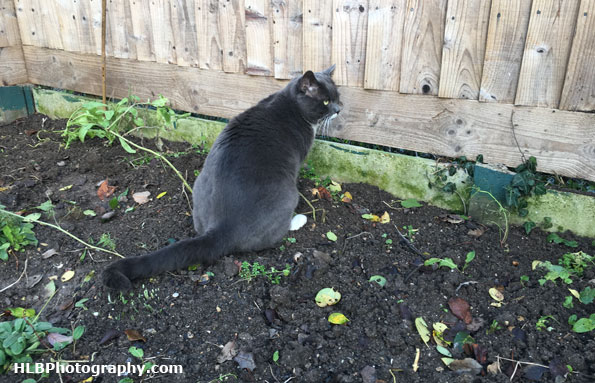I thought I would combine November and December’s garden updates due to Winter being a quiet time in the garden…
November
This year I concentrated on the right hand side of the garden and rather neglected the left. The left side consists of no beds at all; there is a whitebeam tree planted in the patio and a few pots containing, mint, rosemary, Penstemon ‘Pensham Plum Jerkum’ and Choisya ternata. There are bird feeders and a bird bath, the birds always feed from the feeder on the left side first. I think this is because of the extra cover the whitebeam tree and next doors hazel provide. On the other side of the fence there is also hawthorn hedge that I am yet to cut back as I have read they should be cut once dormant and that is in mid-Winter; the birds like it for darting up into when they get spooked.
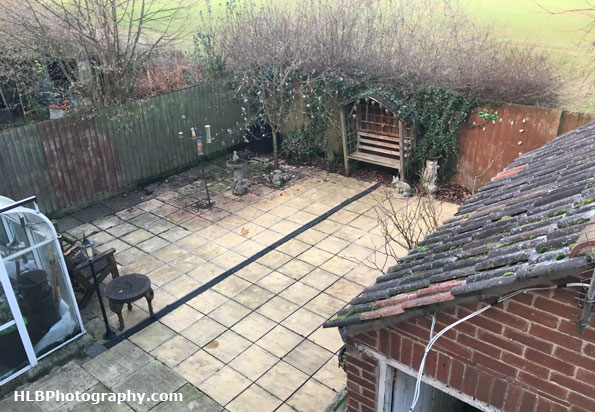
December
I have done some ‘tidying’ of the garden. The tomato canes have now been taken down and stored in the greenhouse. I discovered two hazelnut saplings in the raised bed so they have now been transplanted to a large pot.
I have collected all the leaves and put them in an old water butt that has a leak so they can decompose / be added to the compost bin as required. I have ‘weeded’ the raised beds, pruned the roses and planted daffodil bulbs in pots for spring – there will be more flowers in the garden next Spring than there was this and hopefully they will help support the early emerging insects 🙂 I have sown yellow rattle and lady’s bedstraw in the garden and found a buddlea in the bed which has been relocated to a pot. I have found more pots, some of which I have washed, but there are still lots to do.
I have been given two very small buddleia by my Auntie as she had a few that self seeded in the garden. I have decided that they should be kept in pots as I don’t have a lot of bed space! When they are big enough they are going to live on the left side of the garden.
I have been looking at some wildflower seeds to order for next year:
Borage – The flowers replenish their nectar regularly so they are great for the bees and other pollinators.
Birdsfoot trefoil – is the burnet moth’s principle food plant, I have no idea if we have any burnet moth in the area but I am willing to provide them food 😉
Garlic Mustard – to encourage orange-tip butterflies
Cornflower
Red Campion
Wild teasel – as they are popular sources of pollen in the summer and when they got to seed the birds will like them too 🙂
What I also want to do is take a look at the insects that I have photographed in the garden this year and find out what their principle food plant is, I can then help them by planting more of what they like. So far I have researched…
Small Magpie moth – stinging nettles, less often mint and other labiates – we have mint and lots of stinging nettles in the field.
Mother-of-Pearl moth – Stinging nettles
Buff-tip caterpillar – Deciduous trees; most frequently on sallows, birches, oaks and Hazel (Corylus avellana) – there is hazel in the garden J
Red admiral – common nettle
Green-brindled crescent moth – caterpillars feed on a variety of trees and bushes, including hawthorn and blackthorn. There is plenty of hawthorn and some blackthorn in the hedgerows of the field 🙂
Mint moth – caterpillars feed on various Labiatae – we have Mint in the garden but I plan on sowing more.
Although I have been looking at what I can plant in the garden, I hope to also plant some of the wild flowers I grow in a small patch in the field / road verge. I will be buying them from Emorsgate Seeds so their origin can be traced to sustainable UK sources 🙂 If anyone has any suggestions of other wild flowers I should definitely grow please let me know in the comments or via Twitter. Thanks 🙂



